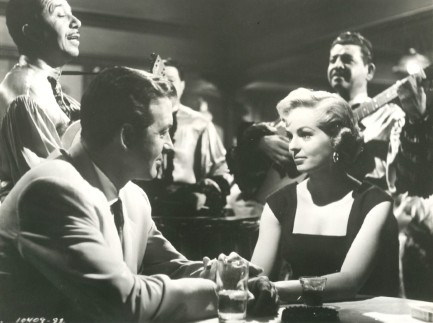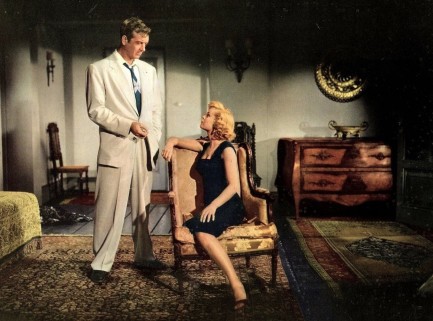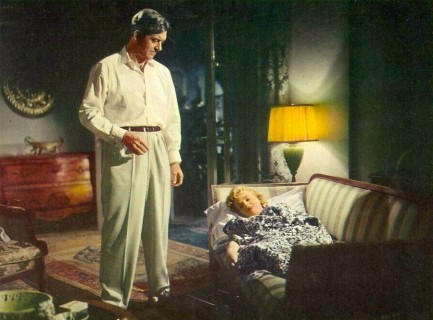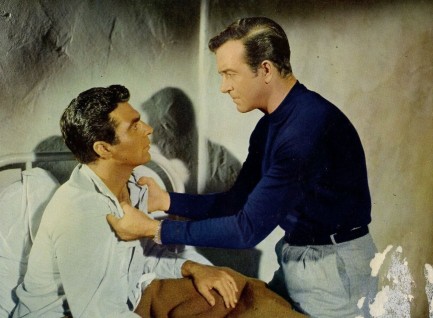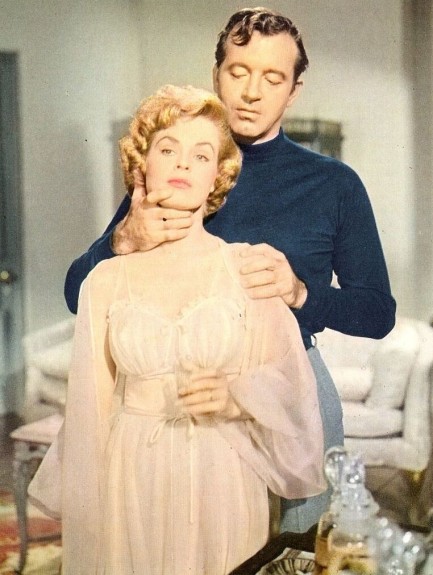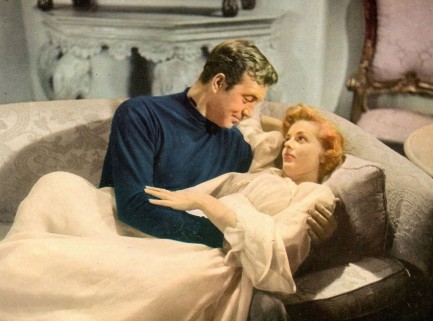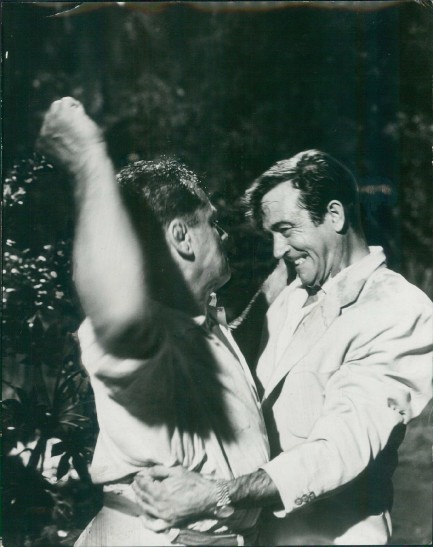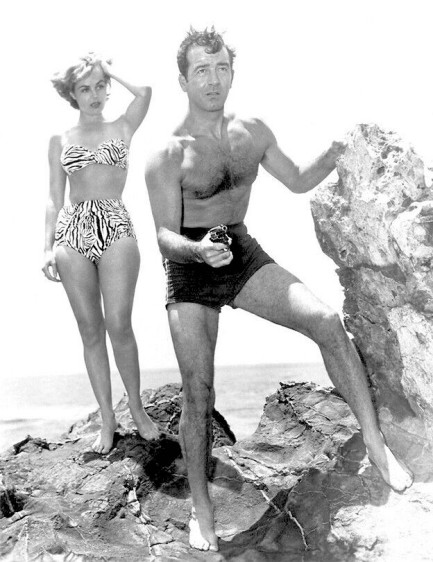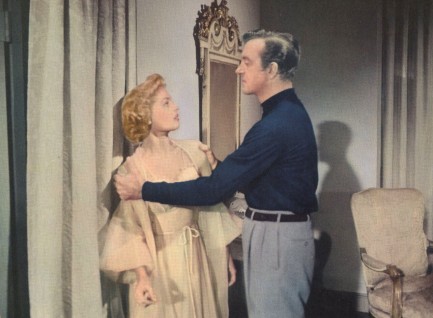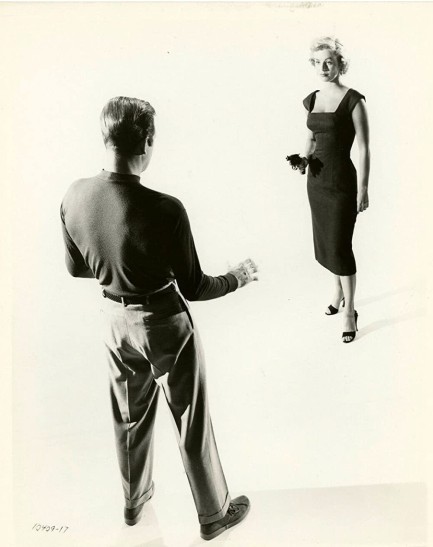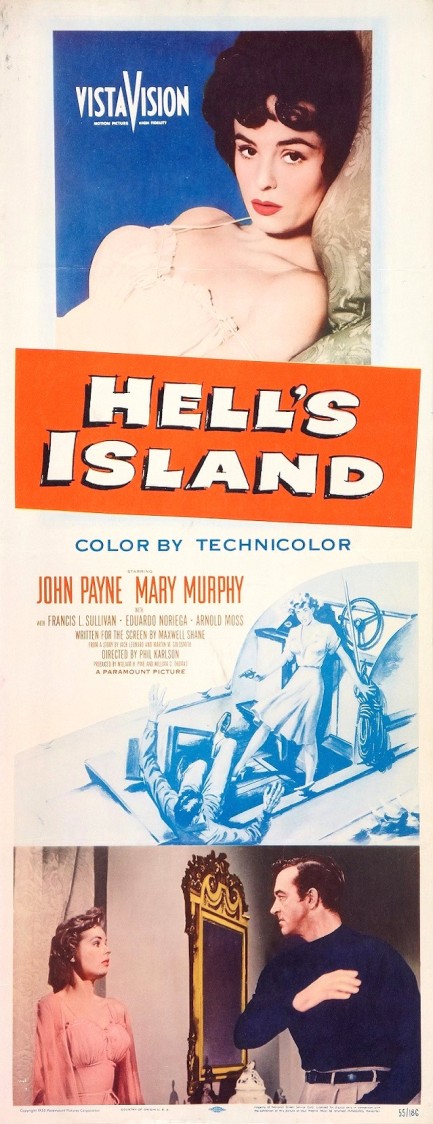 Yul be the death of each and every one of them. 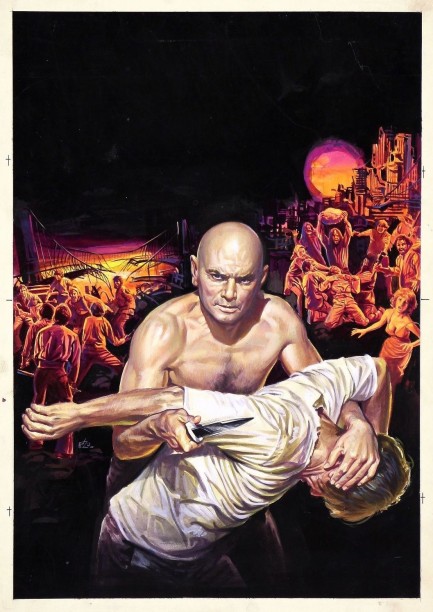
It's been quite a while since we looked at the work of Italian illustrator Enzo Nistri. In recent years we've been focusing on his younger brother Giuliano, but they were both major talents. Here you see something special from Enzo—a textless original piece of art for the 1975 Yul Brenner movie The Ultimate Warrior, known in Italian as Gli avventurieri del pianeta Terra. It's about a group of people trying to survive in post-apocalyptic New York City. They eventually hire a tough-as-nails warrior to protect them. That would be Brenner. The movie is set in 2012, which is rather funny, but sci-fi fans are used to temporal predictions being way off. Blade Runner was set in 2019, and Soylent Green was set in 2022, and here we are without flying cars, replicants, or crackers made of human beings—although that last might show up soon the way things are going. In any case, fantastic work from Enzo. We'll try to feature him more later. And we may even screen the movie and report back.
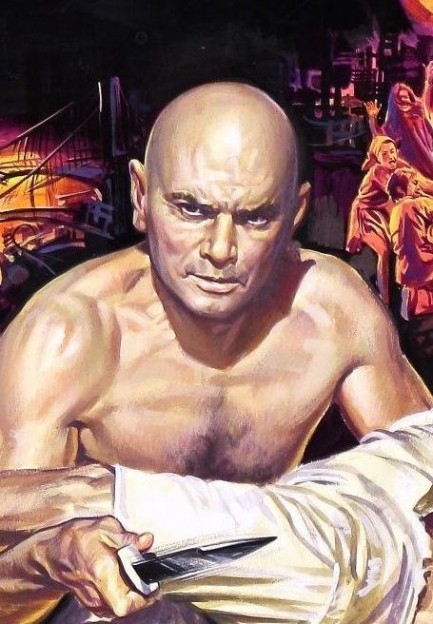
 Is Django le carogne hanno un prezzo a disaster from start to finish? Why of corpse it is! 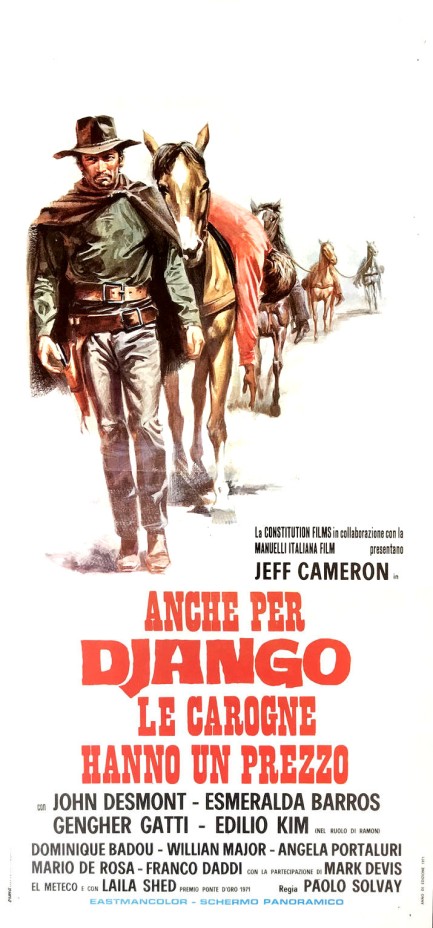
We love it when a plan comes together. We told you we hoped to watch this movie, and luckily it premiered today in 1971, mere weeks after we featured co-star Dominique Badou and her bizarro butt stripe. What you're seeing is a poster for the spaghetti western Anche per Django le carogne hanno un prezzo, known in English—amazingly—as Django's Cut Price Corpses. But a unique and snazzy title does not a good movie make. Pardner, this is by far the worst western we've ever seen. It has to be a satire. It absolutely must. But as we've discussed before with satire, if it's poorly made you often lose the ability to discern whether the filmmakers actually are just inept.
This one—and by the way we don't actually think it's a satire—is the sad work of Luigi Batzella, whose other movies include Achtung! The Desert Tigers and The Devil's Wedding Night. So it turns out Django's Cut Price Corpses isn't such a unique title after all. The movie is about bounty hunter Jeff Cameron searching for the notorious Cortez Brothers, who recently stole gold from a Silver City bank and kidnapped a woman. Cameron rides into town and pre-orders some coffins, signaling his firm intent to kill, in a bit that is possibly—no definitely—stolen from Clint Eastwood. He makes an uneasy partnership with Gengher Gatti and John Desmont, who both want the Cortez Brothers for their own reasons, and off they go into the hills on their hunt.
However, Cameron may have secret motives. Oh, hell, why are we bothering to be coy? He's really there to rescue his fiancée Dominique Badoue, who is the kidnappee from the bank job. This twist is revealed by the undercover cowboy in the final two minutes. Yes, that's a spoiler, but we care about you, and now maybe you'll watch a better movie, or read a good book, or drink a bottle of mezcal and hurl, or get an eyelid tattoo, or have someone smash your fingers flat with a meat tenderizer on a marble countertop. All are better options than Luigi's cut price western. How bad are we talking? In the wide shots we kept expecting to see cars passing and—bingo!— at moment 36:34 in a stagecoach scene, there it was. No horses were harmed in the making of Anche per Django le carogne hanno un prezzo, but numerous careers should have ended up in the glue factory. 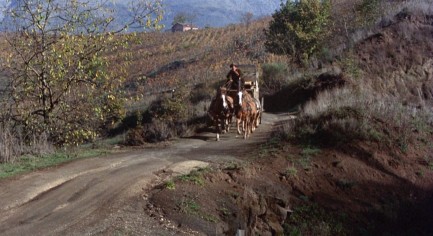 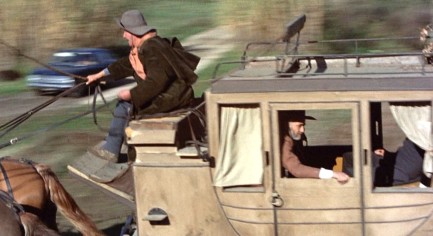 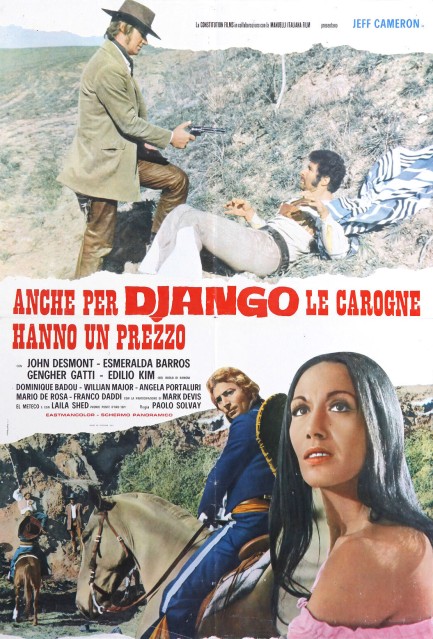
 The weather is warm but the amenities leave a lot to be desired. 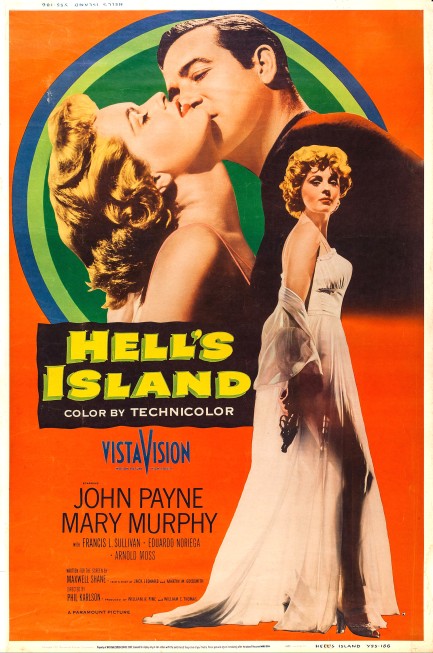
This is a great poster for a forgotten b-movie, proving yet again that even the most minor productions often had unbeatable promo art. Hell's Island premiered today in 1955 and starred John Payne, Mary Murphy, and Francis L. Sullivan. Payne plays a casino bouncer who's promised $5,000 to fly to the fictional Caribbean island of Puerto Rosario to locate a valuable ruby. Unfortunately, his employer has selected him because one of the thieves might be amenable to Payne's persuasion—namely his ex-girlfriend Mary Murphy. Naturally, once he arrives in Puerto Rosario he gets romantically tangled up with her again. She's married, which is a bit disloyal, but her husband is unjustly imprisoned on a nearby island. She still believes in that “for worse” thing enough to ask Payne to rescue her spouse, so he tries to make a deal: the husband for the ruby. But Murphy claims to know nothing about the gem. Is she lying? Have another look at the poster. Does that look like an honest person to you?
To get to the heart of the matter, Hell's Island is one of those mid-budget thrillers meant to feature fast paced, hard boiled dialogue, but which is saddled with unintentional laugh lines thanks to an inferior script. For example, at one point Payne lays in agony on an operating table awaiting surgery, and asks the doctor, “Can I have a cigarette?” The doctor's response? A shrug and, “Why not?” We don't think doctors—who saw a lot of tar-filled lungs up close in surgery—were cavalier about smoking, even back then. Here's another funny line: “About an hour ago he takes his fighting cock and goes away.” There are many more. But what we can say in film's favor is that it improves once it stops trying to be sly. The latter half speeds toward a climax that's just good enough to save the movie from the avoid bin. It's unusual to encounter a film that's part unintentionally comic ineptness, and part competent adventure, but that's what you get here. Proceed accordingly.
 Sometimes it even has a small calibre firearm. 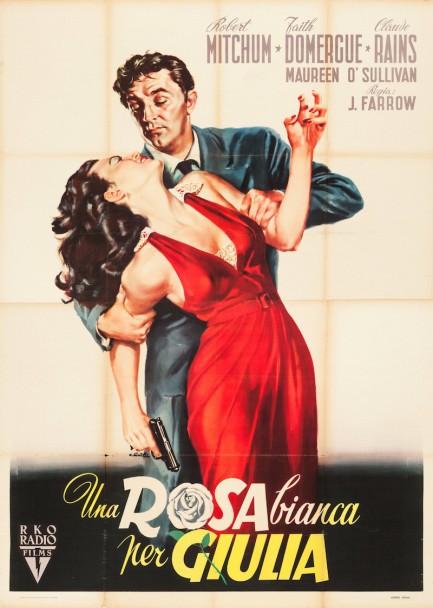 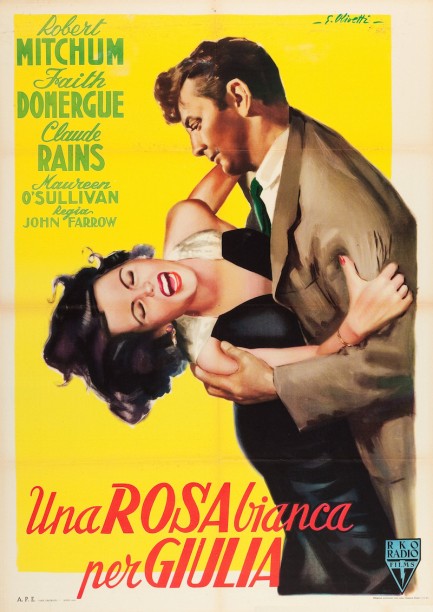
We have two brilliant items above—a pair of Italian promo posters for When Danger Lives, starring Robert Mitchum and Faith Domergue. The first was painted by Averardo Ciriello, and the second is the work of Giorgio Olivetti. Both artists are geniuses. In Italy the movie was called Una rosa bianca per Giulia. That would translate as “a white rose for Julia,” which was the working title of the movie while it was under production. The Ciriello poster is similar to the U.S. promo, but executed with more detail. Not to be outdone, Olivetti is less intricate but depicts a more desperate struggle, electing to paint Domergue unarmed—unless she's holding a gun to Mitch's head, in which case it would be a very short struggle. However, while Mitchum is getting the better of her on both posters, in the movie she tries to smother him with a pillow, so their relationship is—in a weird way—equal. You can read more about it here. After premiering in the U.S. in 1950, Where Danger Lives opened in Italy today in 1951.
 Queen Kong is so bad you'll hope a giant ape carries you away just so you don't have to finish watching. 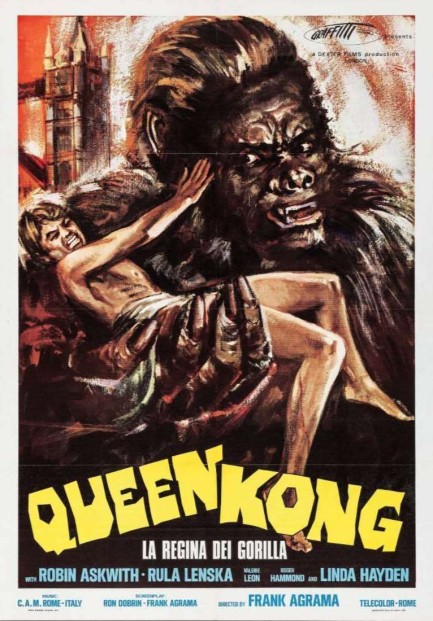 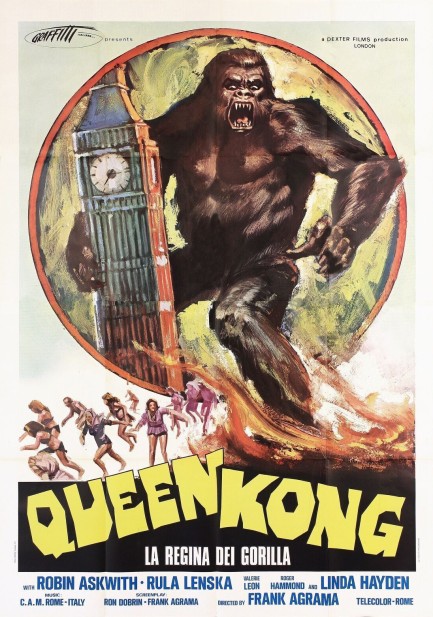
Sometimes you get fooled. These Italian posters for Queen Kong, aka La regina dei gorilla, vibed sci-fi b-movie, but what we got was a comedic gender swapped version of King Kong about an egomaniacal filmmaker who dupes an idiot named Ray Fay into starring in her monster movie set in Uganda. Despite its efforts to be literate and referential, the final result here is too stupid to enjoy. It's on the level of an old public access program written by high school seniors who haven't figured out yet that the gags they think are incisive and original have been done a thousand times before—mostly in Vaudeville. Tongue-in-cheek lines like, “We came to make a movie but created a farce,” and “So that's gorilla warfare!” just sting. Our guess is that the filmmakers had access to a giant ape hand and worked backward from there. Intentionally trying to make a bad cult movie is usually a losing game. We were embarrassed for everyone involved. But we like the posters. Queen Kong premiered originally in 1976, and cheated ticket buyers in Italy for the first time today in 1977.
 Is there really such a thing as too much? 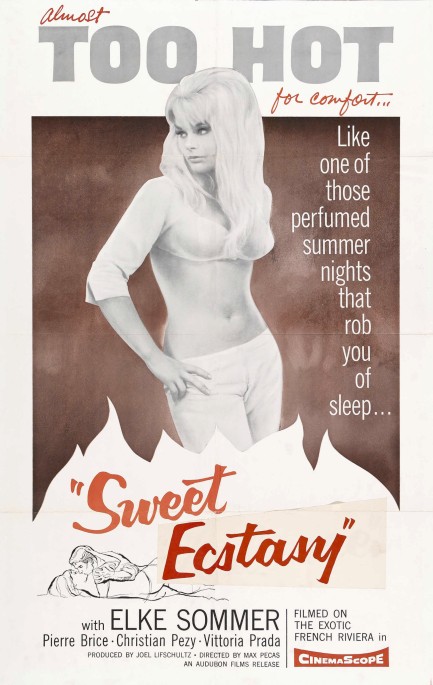
Elke Sommer front and center on a vintage poster claiming she's “almost too hot”? Sign us up. Sweet Ecstasy was originally made in France as Douce Violence—“sweet violence”—and fits loosely into a cycle of films characterized as nouvelle vague, or the French new wave. Director Max Pécas, however wasn't a new wave director. He was better known for his work at the forefront of the cinéma Z style, also known as the nanar sub-genre, films loosely equivalent, we gather, to eroticized b-movies, meaning sex and stupidity. Pécas is also remembered for a trilogy of 1970s Saint-Tropez erotic comedies. But for Douce Violence he's an art director, trying to make a significant statement in the same broad category as La dolce vita or À bout de souffle, aka Breathless.
To that end, what you get here is a group of idle twenty-somethings for whom entitled boredom is the order of the day, as they rip around the French Riviera near and within Cannes, seeking thrills and not caring about the future. When Olivier (Christian Pezey) finds himself drawn into this clan of troublemakers living on their parents' money, their leader Maddy (Pierre Brice) enlists his own girlfriend to be the soft edge of the wedge in a scheme to corrupt the newcomer. It's for Olivier's own good, you see, because he's too bourgeois.
The girlfriend is Sommer, playing a character also named Elke, and she's in vamp mode here, which means cat-eyed make-up and cumulonimbus hair, as she taunts and teases poor Olivier in her efforts to make him into a fellow disaffected youth. Is she too hot? No. Elke is always just hot enough. She and her pals go water-skiing (really Elke in some of the shots), swimming, boating, driving, and most of all, partying. They question convention, conformity, society, mortality, and all the rest. Like other movies of this type, there isn't much plot. Also as in similar films, an event galvanizes and changes the group—or seems as though it might.
The main attraction in the film is Elke, and she delivers what early ’60s audiences wanted—an envelope pushing performance amidst a growing wave of censorship-destroying movies. Like Bardot and others, Sommer shows a lot of skin, and almost—almost—goes topless. Though it's supposed to be gauche to say so about a woman these days (but we don't care, because sex is why we're all here, and it's ultimately all that matters, despite modern attempts to obfuscate it, hide it, police it, and shame it), Elke's very stimulating. And she doesn't even look her best here, due to the crazy make-up and hair. As a final note, we suspect the movie was censored in the U.S. to remove some revealing bikini scenes, some shots of Elke's asscrack, a bare breast caress by a male character, and (probably) some or all of a sweaty, open-shirted dance by a black character. The poster certainly was censored—no doubt about that. The word “ecstasy” was placed to cover the word “violence.” You can just see it if you squint. So the movie's title was set to be literally translated, but that was deemed too much for Americans—or at least some Americans (southerners, we suppose). Douce Violence opened in France and Belgium in early 1962, and reached the U.S. today the same year. 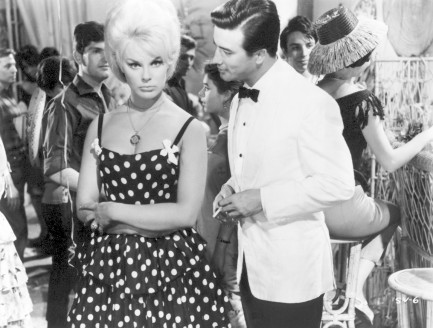  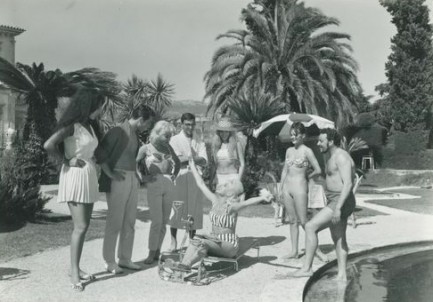 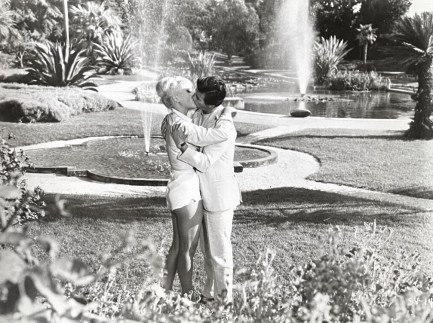 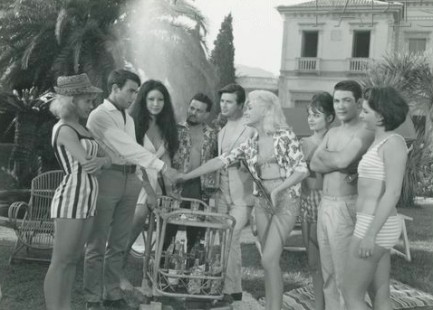 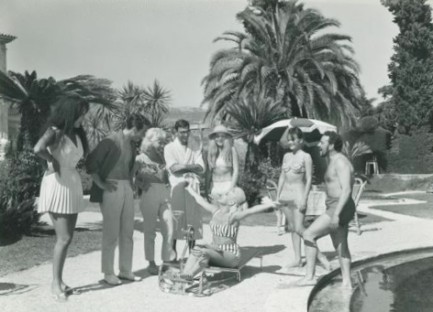 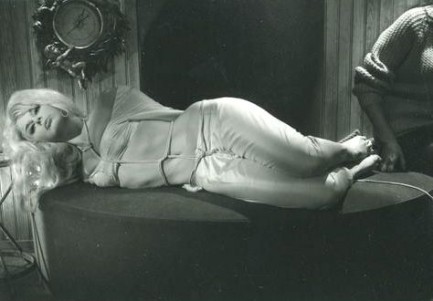 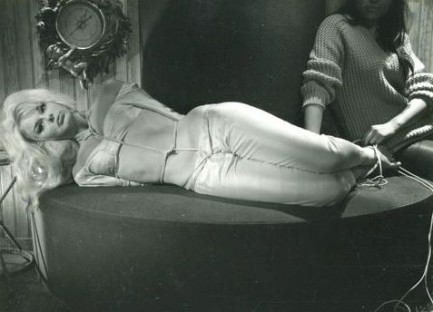 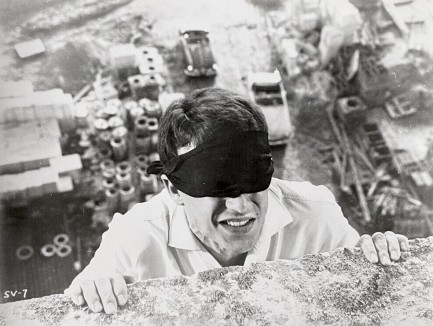 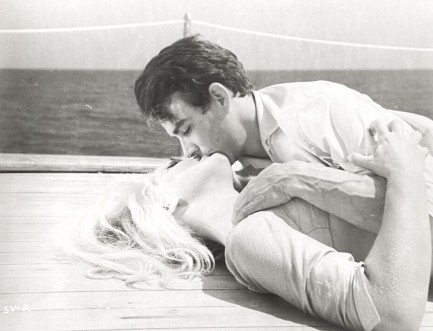 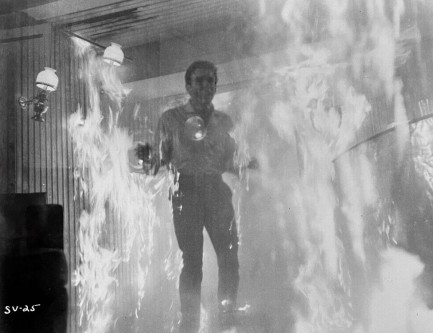  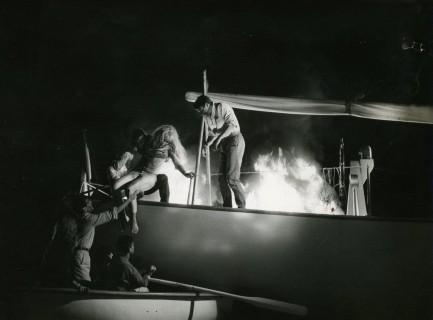 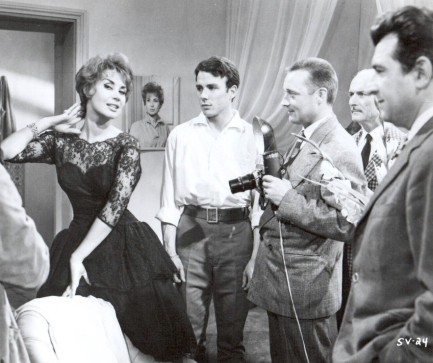 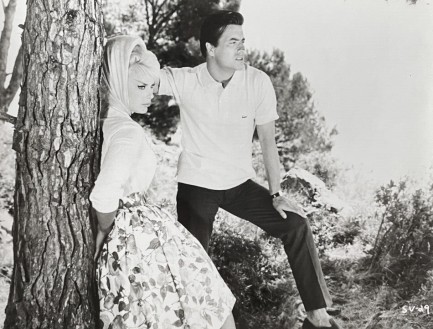 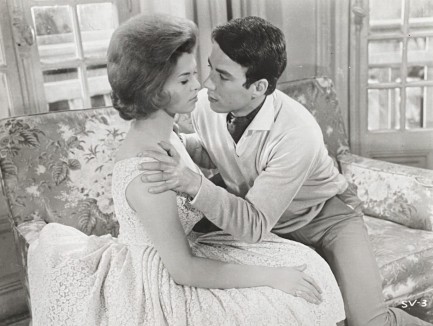 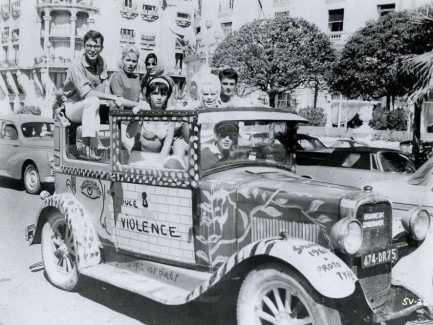 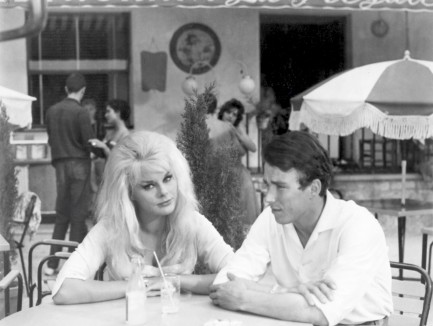 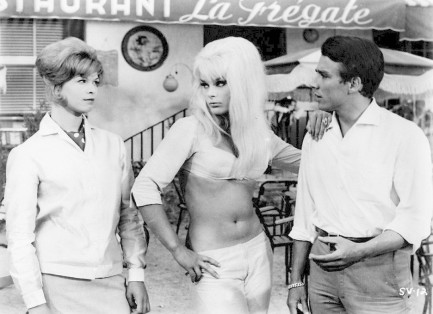 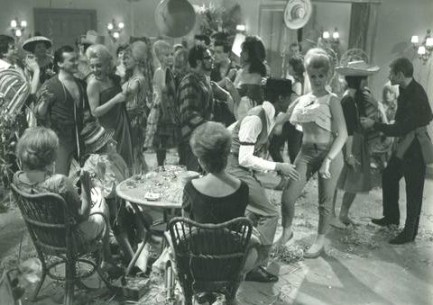 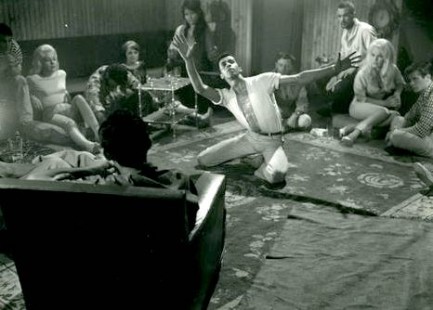 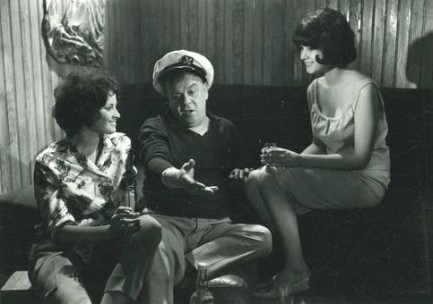 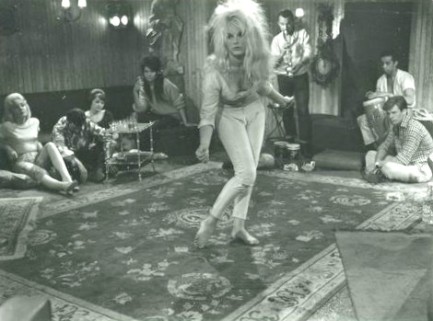 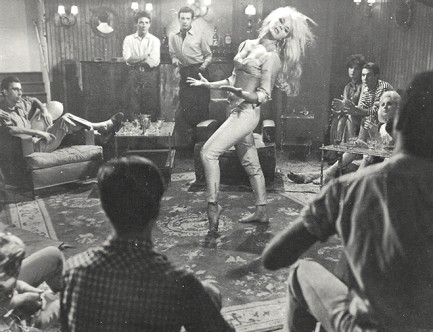 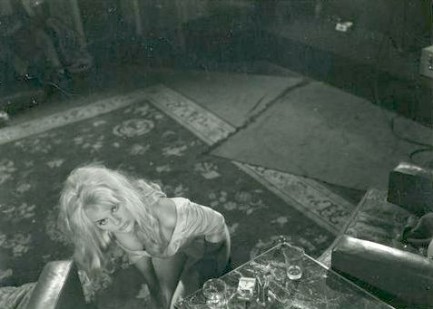 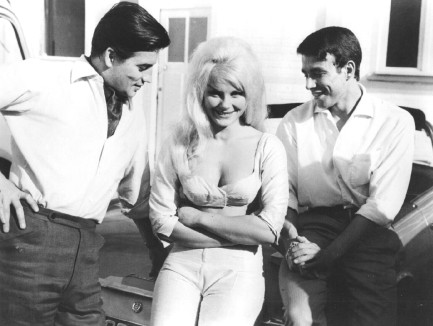 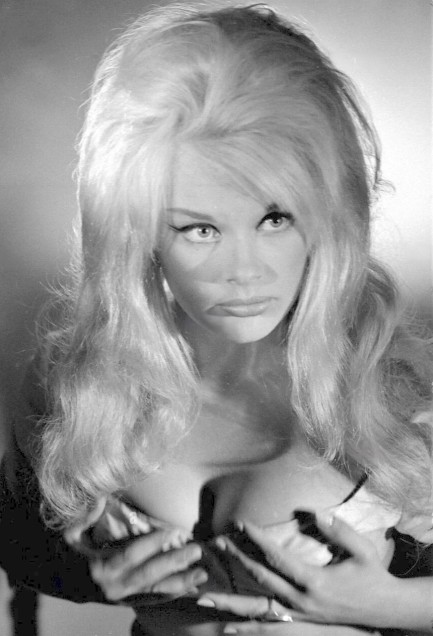 
 He was honest. Everyone else made the mistake. 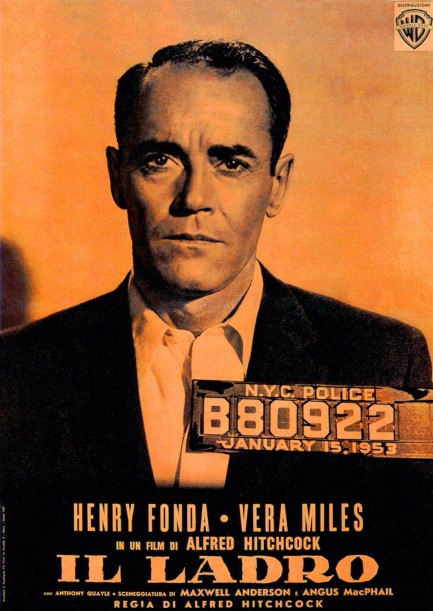
An array of posters were made for Alfred Hitchcock's crime drama The Third Man, which was titled in Italy simply Il ladro—“the thief”—but we've chosen this unusual mugshot based promo because it encapsulates the film nicely. The tired look on star Henry Fonda's face says it all. He's mega-screwed. There are probably other movies that took the mugshot route with their poster art, but we can't remember seeing any examples. For Il ladro, the mugshot poster was part of a series of photo promos taken from various frames in the film, but today we'll just share the one above. Also, below you'll see two more Italian posters painted by Luigi Martinati. It's rare that we prefer photo art to paintings, but this case, because of the subject matter of the film, is one of those exceptions.
Said subject matter is the true tale of Emmanuel Balestrero, an everyman who is falsely identified as an armed robber. This leads to his arrest, ordeal in jail, trial, and retrial. The movie hails from a more naive time, before Americans realized that when the police come asking questions the only answer you give is: “Am I under arrest?” And if the answer is yes, the next thing you say is: “Lawyer,” and that's all you ever say. It's crucial never to talk, because in the U.S. cops are allowed to lie to you, claim there are witnesses that don't exist, or that there's evidence they don't really have. That isn't legal in England, Australia, New Zealand, and many other countries. But Fonda doesn't know any of that, and ultimately that's largely why he ends up behind bars.
After he makes bail he and co-star Vera Miles pound the pavement investigating the false accusation. We doubt that happened in real life, but that's the movies for you. Their amateur sleuth bit works fine narratively. There's a psychological digression that's less compelling, but was included because it was part of the true story. On the whole, though, we like the movie. And we like Hitchcock's style here during his middle phase (he began directing in 1922 and finished in 1976), before high concept thrillers like Vertigo and Rear Window—though those are also good. Here he keeps it mostly basic, and the result is a harrowing drama, which is hard to bear as Fonda is slowly railroaded, but is extremely well put together and compellingly acted. The Wrong Man premiered in the U.S. in 1956 and reached Italy today in 1957.
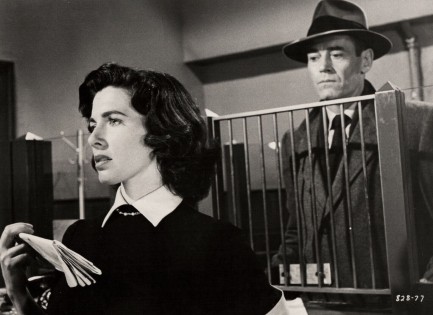 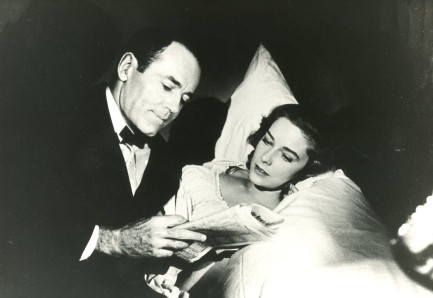 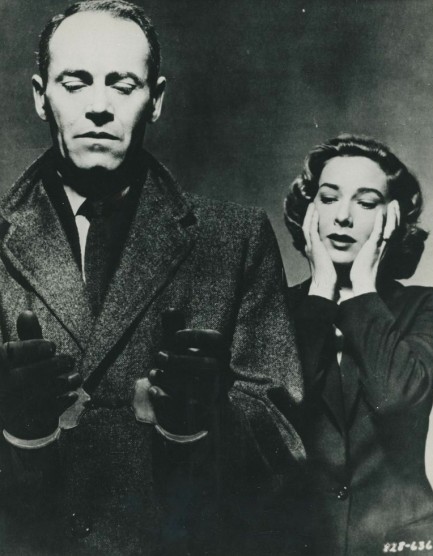 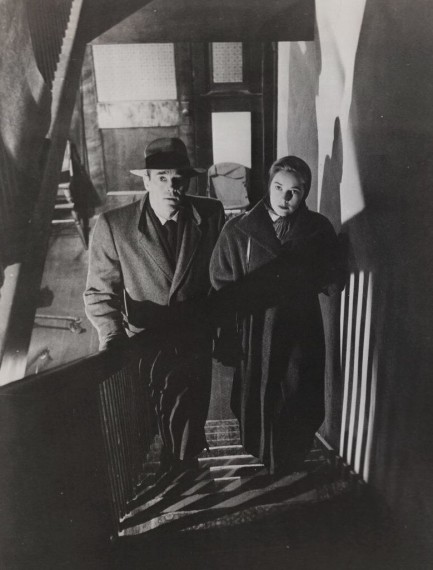 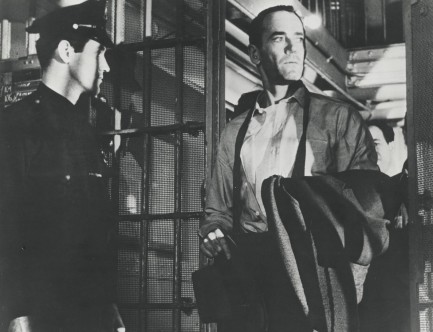 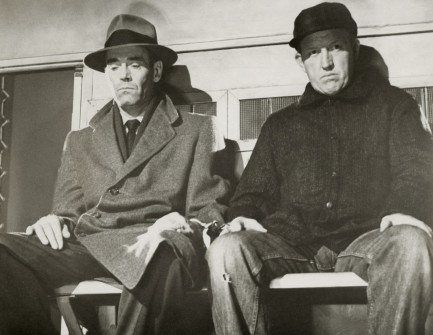 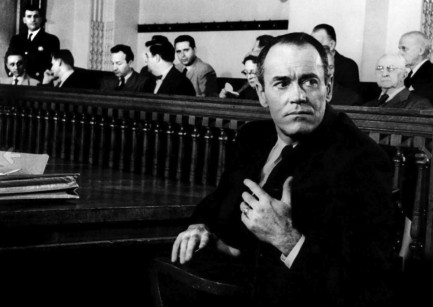 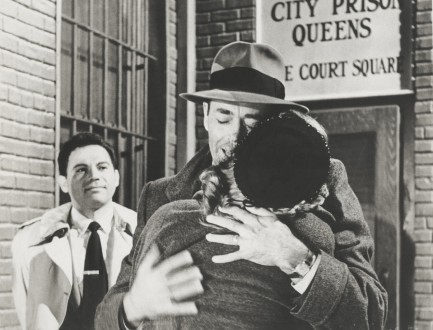 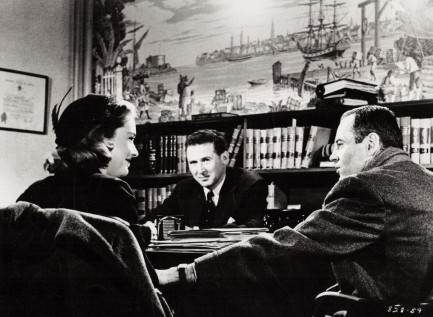 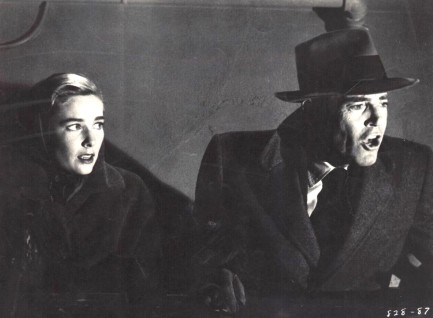 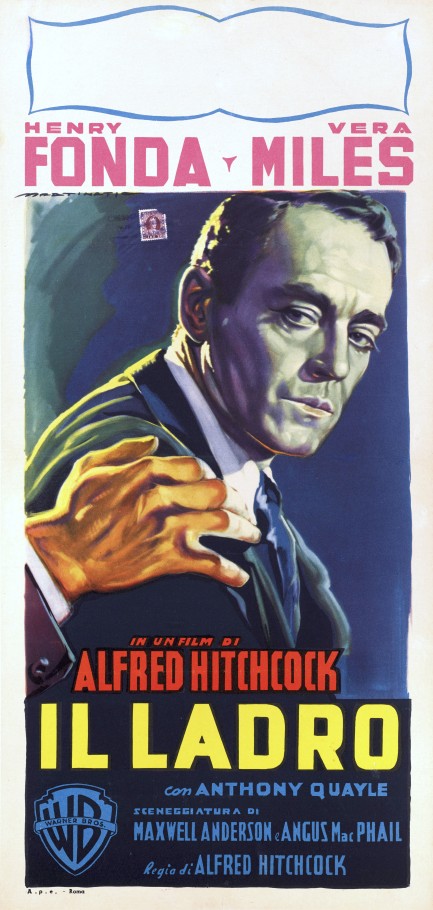 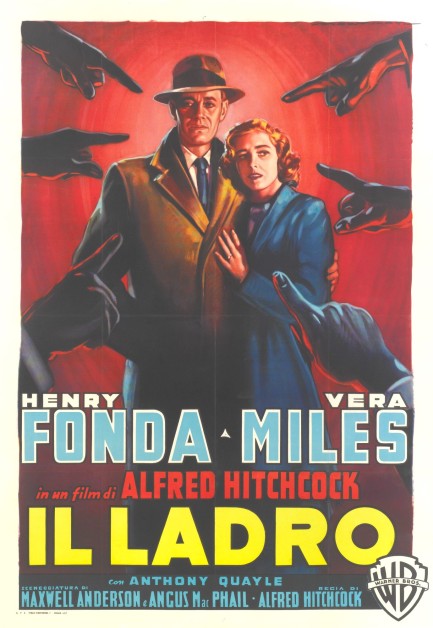
 Round and round she goes. Where she stops nobody knows. 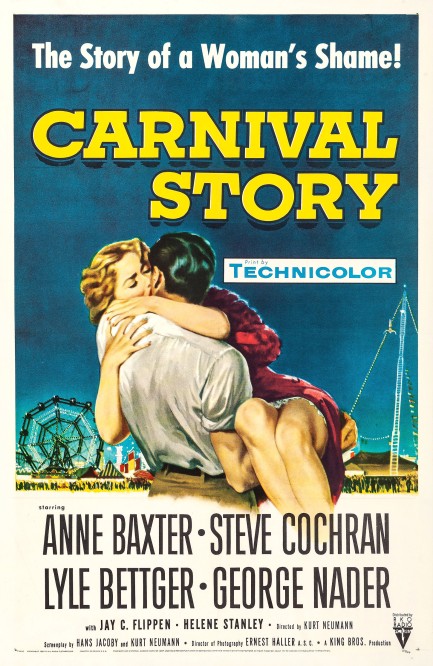
We like books set in carnivals. They've been among our most interesting reads. So we figured a movie set in a carnival—Carnival Story, with Anne Baxter and Steve Cochran—was a natural. We gave it a look and it's an above average drama about how Baxter becomes a high diver in a Munich carnival and makes a big splash, but has relationship issues that threaten to derail her career and life. Her main problem is Cochran. He lies, he cheats, and he steals, but she just can't quit him, even though her diving partner Lyle Bettger is totally devoted to her. Even after she marries Bettger she can't keep her hands off Cochran. This can only end badly. And by badly we mean violence and death.
Carnival Story is one of those movies with an unspoken sexual subtext. Why would Baxter let Cochran mistreat her again and again? Well, because he gives her something no other man can. Though it couldn't be shown onscreen we can understand that something to be sexual passion. Bettger, and later George Nader, are both devoted to Baxter, and they're nice guys besides, but they're square. Cochran gets Baxter's loins all feverish. Portraying a woman trapped in this dilemma during Hollywood's age of censorship takes acting skill, and Baxter, an Academy Award and Golden Globe winner by this point, has plenty of that. Anything she's in is worth a watch. Carnival Story premiered today in 1954.
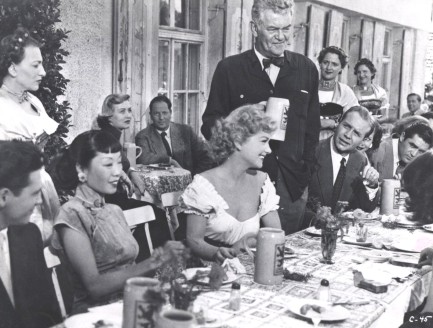  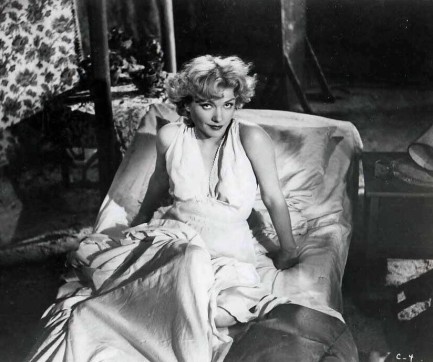 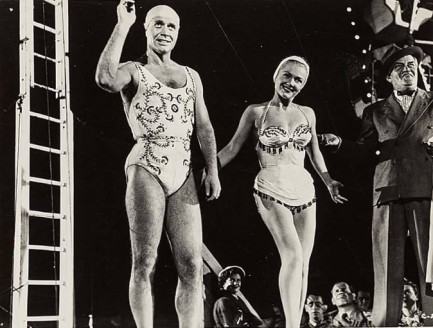 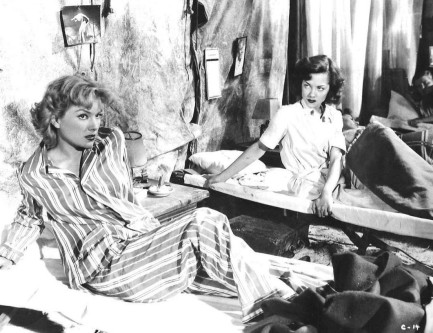 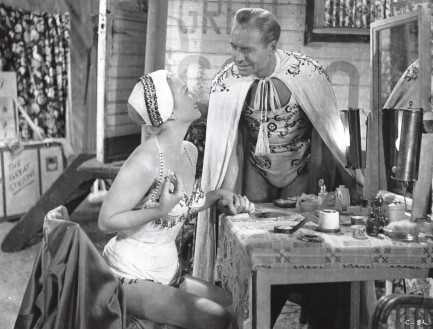 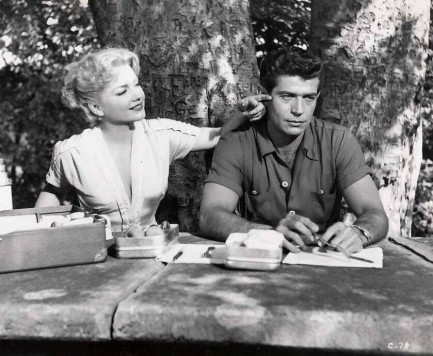 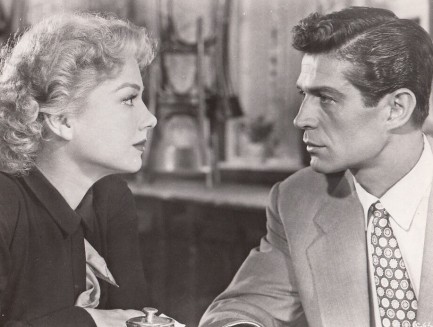 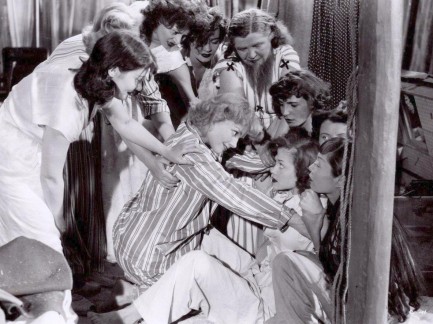 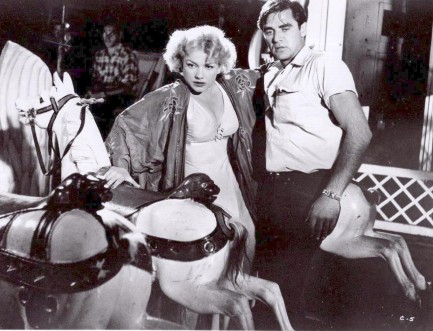 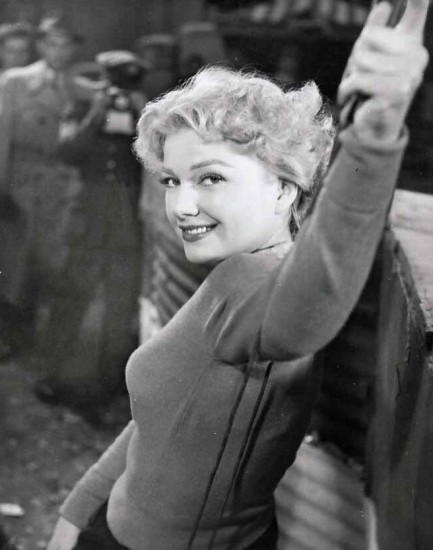 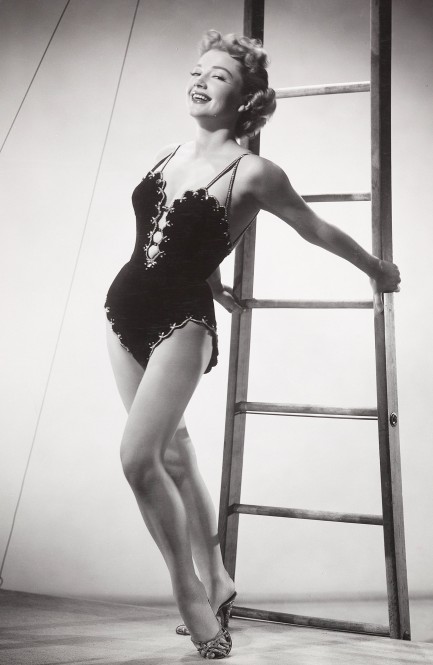 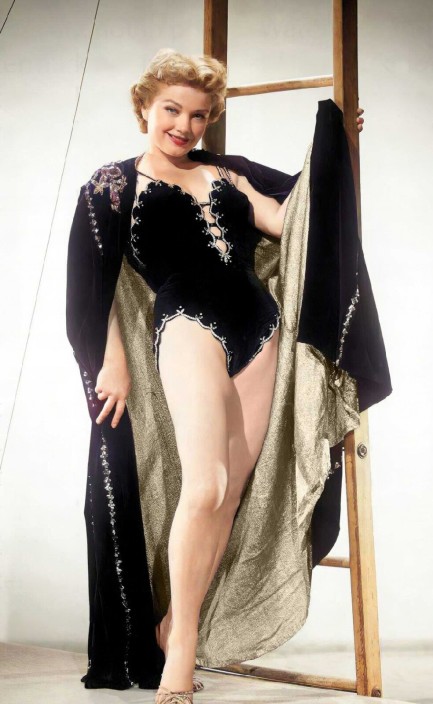
 Meet the new fascists, same as the old fascists. 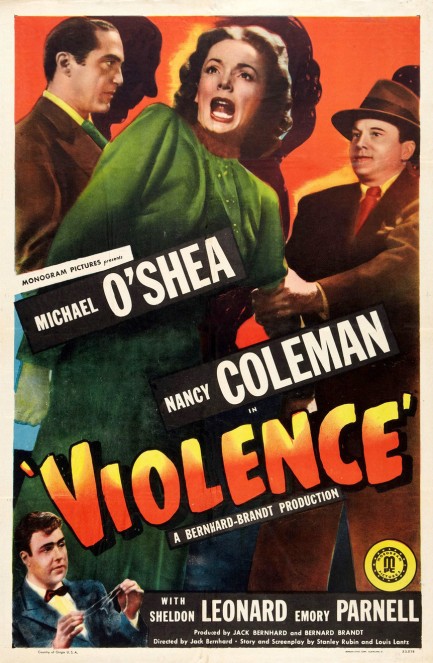
Above is a blazingly colorful poster for Violence, starring Nancy Coleman and Sheldon Leonard, a curious little b-flick about Coleman's reporter character inflitrating a Los Angeles based fascist organization that calls itself United Defenders. The group is a fraud, run by man named True Dawson who uses incendiary populist rhetoric to sign up military veterans, while the organization exploits those same veterans by using their membership dues for secret aims. Coleman has gathered some damning evidence, but when she's tailed by fascist thugs her cab crashes, all her evidence burns up, and she comes out of the fiery accident with amnesia.
To compound the major complication that Coleman has now forgotten she's an undercover operative, United Defender member Michael O'Shea shows up in the hospital the next day and convinces her that he's her fiancée. Yipes. We should mention here that part of Coleman's clandestine work has involved romancing United Defenders' oily number two man Sheldon Leonard, but because the movie was made during the 1940s the directions that sticky subplot could go—esentially she's been passed from one man to another—never really materialize. Maybe it's better that way.
Once out of the hospital Coleman is turned into a spokesperson for United Defenders, but her bruised psyche doesn't take to it smoothly. She faints during a speech and is generally out of sorts. Meanwhile the wheels keep turning. The fascists cultivate dark money—literally dark, as a character promising a boatload of new capital appears only in shadows. It's clear by this point that the purpose of the group is to amass wealth and power. The vets are just window dressing, occasionally to be used as shock troops. Asked how he plans to control these dupes, True Dawson encapsulates his amoral aims with this: “We get 'em young and tough, the kind that's already wearing a chip on its shoulder. And then we'll prime them for the payoff. We'll prime 'em with hate. Hate for labor. Hate for management. Hate for the party that's in. Hate for the party that's out. We'll keep 'em so busy they won't have any time to [uncover the truth].”
Objectively, Violence is cheesy. Hell, even the poster is sort of cheesy, with Coleman, O'Shea, and Leonard looking more like an alternate Three Stooges than intrepid political operatives. But certain aspects of the movie are uncomfortably close to reality: the patriotic rhetoric relied upon by Dawson and his fascist lackeys, the exhortations to manhood designed to inflame the membership, the vocal support for workers while the group's actual aims are pro-corporate, and the harangues about what real America is supposed to be. Overall the movie is too b-level to compare to predictive masterpieces like 1976's Network, but it has its disconcerting flashes of insight just the same.
Obviously, Coleman has to get her memory back at some point, and to make that happen the movie relies upon the old screenwriting chestnut that a second blow on the head can fix amnesia brought on by a first. That second blow comes when Leonard accuses her of being a spy and slaps her around. The first slap is accompanied by the sound of a cymbal crash. Better than a glockenspiel, we guess. Another symphonic slap or two and Coleman goes down hard. When she awakens, her memory is restored and United Defenders again have a spy in their midst. Even so, you figure these badass fascists should be able to handle one nosy reporter.
We'll stop there to avoid more spoilers, but there's one additional minor plot twist we will divulge. Coleman never finds out who the dark money guy is. It seems like a nod to the fact that the string pullers, those corporate quasi-humans with evil aims, are rarely exposed, and certainly never punished. It's a point we liked, but in the end we can't call Violence a good movie—it's too cheap, too shallow, and ultimately minimizes its subject matter. But those few moments when its dialogue sounds like it came directly from 2023 politicians or cable news mouthpieces are highly, highly interesting. Maybe they even make the movie worth watching. Violence premiered today in 1947. 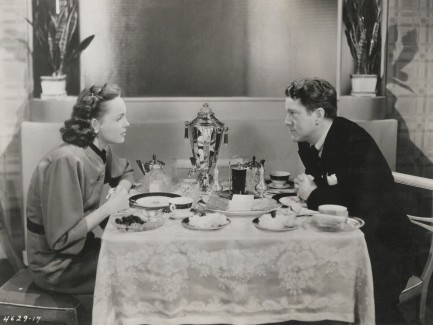 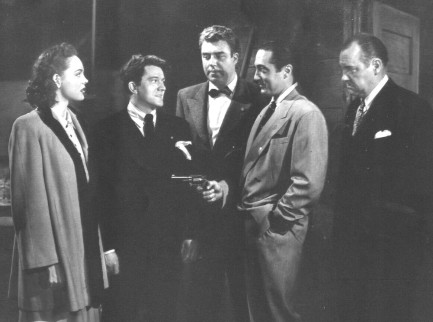 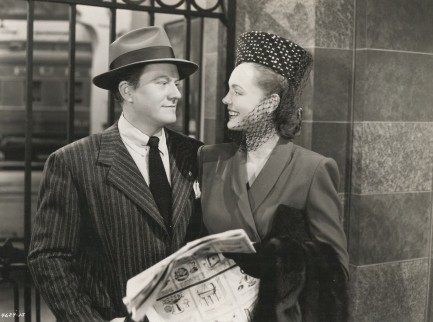 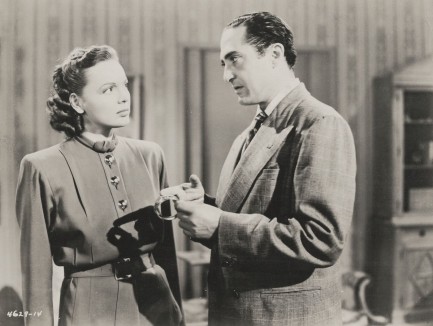
 Sometimes you can't win no matter what you do. 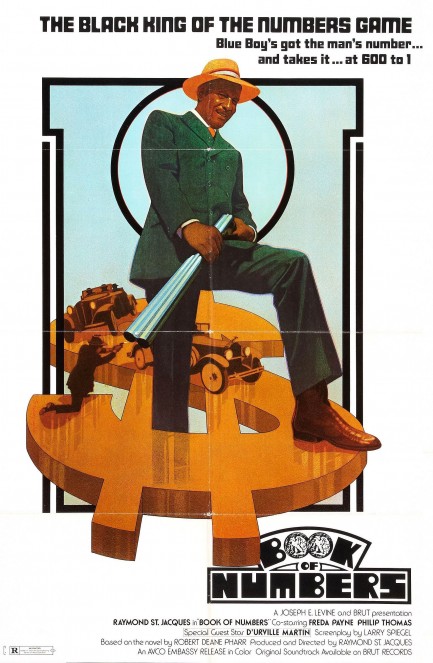
This poster was made for the crime drama Book of Numbers, which premiered in the U.S. today in 1973. The movie falls into the category of blaxploitation, but it's also an ambitious period piece, with a Depression era focus, a deep subtext, and a determination to portray a type of black American life rarely seen onscreen. During the lean years of 1930s a couple of waiters who harbor big dreams ditch food service and hatch a scheme to set up a numbers racket. They roll into El Dorado, Arkansas, get some local help, and soon are making cash faster than they know how to spend it. Their success inevitably attracts the attention of the law, organized crime, and the local Ku Klux Klan. Can the protagonists succeed against all these foes? And what does success look like for black men in the 1930s? No matter how much money they make, they are still not respected, safe, or free.
The movie stars future Miami Vice stud Philip Michael Thomas, along with Raymond St. Jacques, who produced and directed. Their two characters are decades apart in age, and vastly different in how they deal with constant racism. Thomas takes no guff from anyone, even when it costs him; St. Jacques will play any role expected of him by whites in order to survive. This doesn't sit well with the hot-headed Thomas, and leads to growing resentment. In our view, this is the most unique aspect of the film. It implies that because society forces black men to play roles, they can never be truly known by anyone outside their intimate circle. Robert Deane Pharr wrote the source material for this, and it must be an interesting novel, because it spawned a good movie. Book of Numbers is tough, adult, thought-provoking, and historically revealing. We recommend it for 1930s buffs, blaxploitation aficionados, and of course fans of Miami Vice.
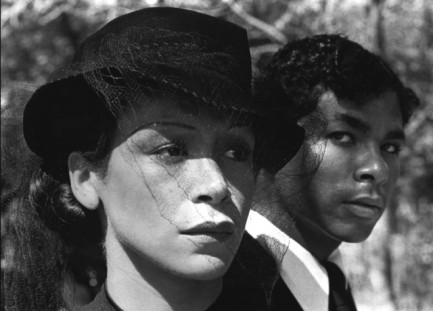 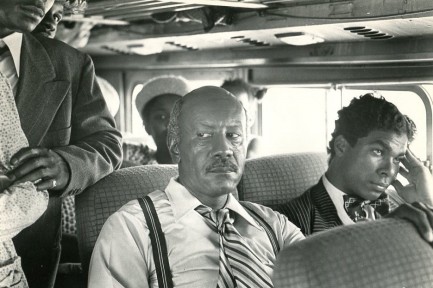 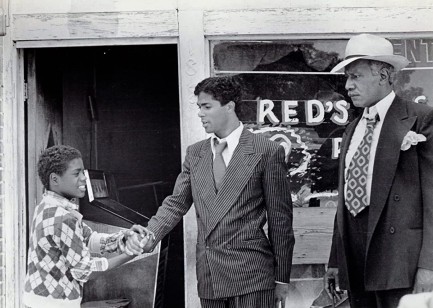 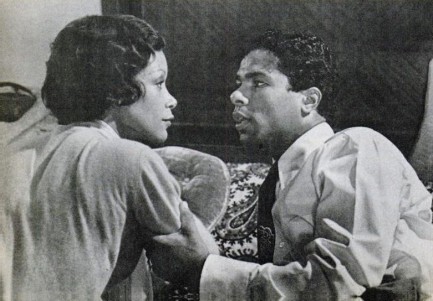 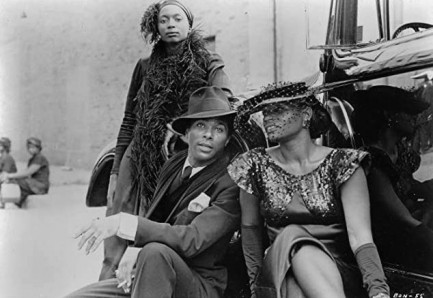
 |  |
|
 |

The headlines that mattered yesteryear.
1931—Schmeling Retains Heavyweight Title
German boxer Max Schmeling TKOs his U.S. opponent Young Stribling in the fifteenth round to retain the world heavyweight boxing title he had won in 1930. Schmeling eventually tallies fifty-six wins, forty by knockout, along with ten losses and four draws before retiring in 1948. 1969—Stones Guitarist Is Found Dead
Brian Jones, a founding member of British rock group Rolling Stones, is found at the bottom of his swimming pool at Crotchford Farm, East Sussex, England. The official cause of his death is recorded as misadventure from ingesting various drugs. 1937—Amelia Earhart Disappears
Amelia Earhart fails to arrive at Howland Island during her around the world flight, prompting a search for her and navigator Fred Noonan in the South Pacific Ocean. No wreckage and no bodies are ever found. 1964—Civil Rights Bill Becomes Law
U.S. President Lyndon Johnson signs the Civil Rights Bill into law, which makes the exclusion of African-Americans from elections, schools, unions, restaurants, hotels, bars, cinemas and other public institutions and facilities illegal. A side effect of the Bill is the immediate reversal of American political allegiance, as most southern voters abandon the Democratic Party for the Republican Party. 1997—Jimmy Stewart Dies
Beloved actor Jimmy Stewart, who starred in such films as Rear Window and Vertigo, dies at age eighty-nine at his home in Beverly Hills, California of a blood clot in his lung. 1941—NBC Airs First Official TV Commercial
NBC broadcasts the first TV commercial to be sanctioned by the Federal Communications Commission. The FCC began licensing commercial television stations in May 1941, granting the first license to NBC. During a Dodgers-Phillies game broadcast July 1, NBC ran its first commercial, from Bulova, who paid $9 to advertise its watches. 1963—Kim Philby Named as Spy
The British Government admits that former high-ranking intelligence diplomat Kim Philby had worked as a Soviet agent. Philby was a member of the spy ring now known as the Cambridge Five, along with Donald Maclean, Guy Burgess, Anthony Blunt and John Cairncross. Of the five, Philby is believed to have been most successful in providing classified information to the Soviet Union. He defected to Russia, was feted as a hero and even given his commemorative stamp, before dying in 1988 at the age of seventy-six.
1997—Robert Mitchum Dies
American actor Robert Mitchum dies in his home in Santa Barbara, California. He had starred in films such as Out of the Past, Blood on the Moon, and Night of the Hunter, was called "the soul of film noir," and had a reputation for coolness that would go unmatched until Frank Sinatra arrived on the scene. |

|
|

It's easy. We have an uploader that makes it a snap. Use it to submit your art, text, header, and subhead. Your post can be funny, serious, or anything in between, as long as it's vintage pulp. You'll get a byline and experience the fleeting pride of free authorship. We'll edit your post for typos, but the rest is up to you. Click here to give us your best shot.

|
|










